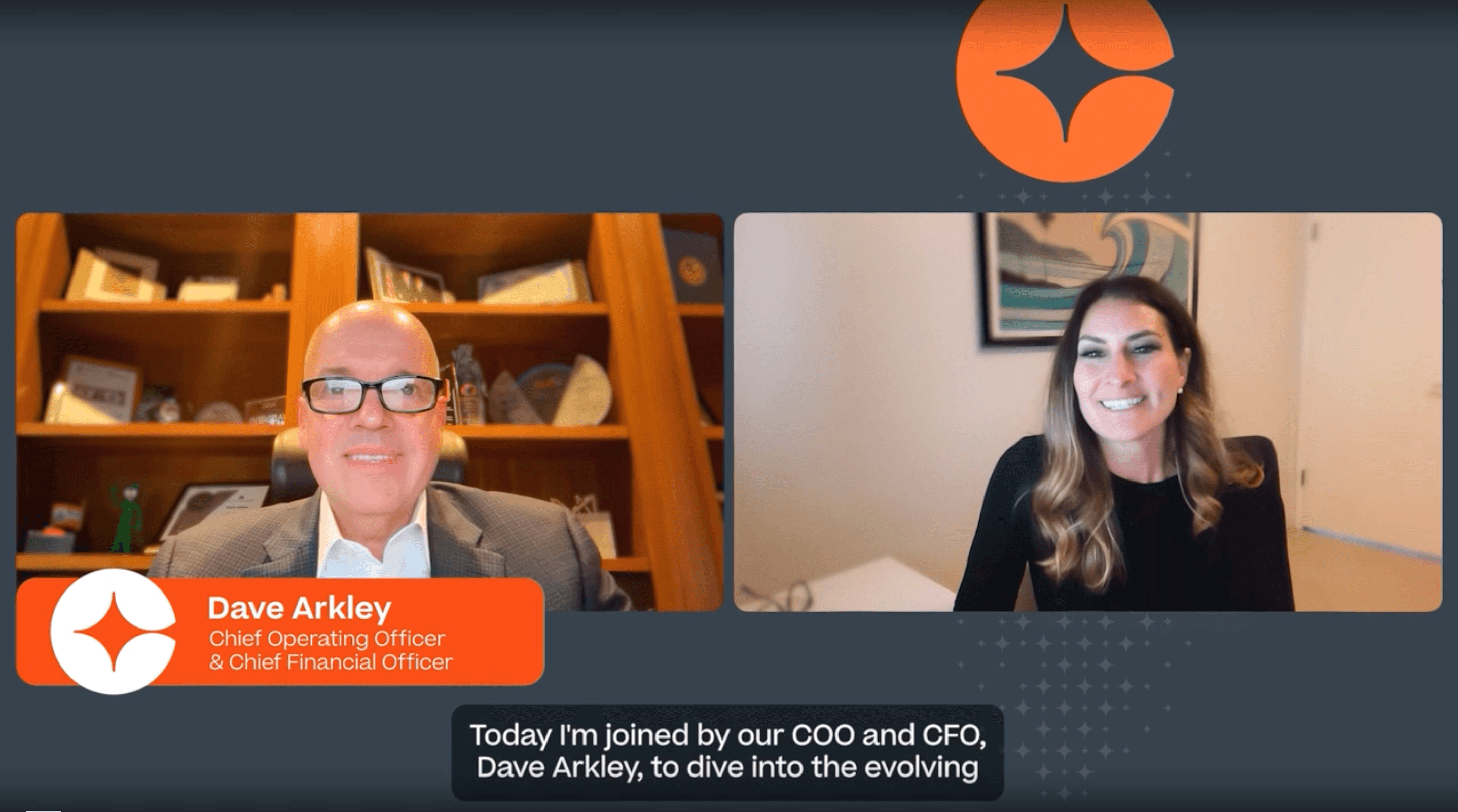Key Takeaways:
- Reskilling: Involves training for an entirely new set of skills to adapt to different roles within the company due to technological advances, promoting employee growth and retention.
- Upskilling: Enhances existing skills for additional responsibilities and higher-level roles, creating a continuous learning strategy and fostering industry-leading talent.
- New Skilling: Represents continuous learning to build high-demand skills, adapting to the changing needs of the workforce and staying relevant in the evolving world of work.
As technologies like artificial intelligence (AI), predictive analytics and blockchain become more commonplace, organizations are struggling to find candidates with the skills needed to keep up and evolve these new systems and platforms, leading to significant skill gaps. More than 80% of talent development professionals report a skills gap in their organization, and 78% anticipate a future skills gap.
This challenge is particularly urgent given recent research showing that the half-life of a job skill is now less than five years, with technical skills lasting just two and a half years. Additionally, 58% of the workforce needs new skills to successfully do their jobs today, and 70% of workers indicate they would switch jobs if offered opportunities to learn new skills.
"Companies are having to change what they do and how they do it," says Mikell Parsch, CEO of global IT training company New Horizons Computer Learning Centers. "The double change—pace of technology and pace of business evolution—is making workplace skills training essential." To bring the skills they need to their workforce, today’s HR leaders must rethink professional development programs and look into personalized learning courses, skill-specific workshops or company-sponsored degrees or certifications to meet their needs. They also need to take into consideration the shift toward hybrid and remote work as a result of COVID-19, likely investing more in online rather than instructor-led learning opportunities.
But one-off reskilling or upskilling efforts simply aren’t enough. To ensure their workforce remains competitive and agile, organizations will need to constantly evaluate employees’ individual capabilities and the future skills needed for their business to thrive—setting the stage for continuous learning. To get a better understanding of how reskilling and upskilling fit within this broader “new skilling” strategy, let’s examine each.
What is reskilling?
Reskilling involves training employees on an entirely new set of skills to prepare them to take on a different role within the company. This typically occurs when workers’ previous tasks or responsibilities become irrelevant, often due to advances in technology.
“Businesses do this because an employee may fit well in a team and have marketplace or company knowledge that would be difficult to replace,” explains Parsch. “To keep that employee, the company just needs to update their skills to match new systems and new capabilities.” Reskilling may involve obtaining a new degree, certification or education in a different field or area of expertise. Reskilling is a crucial component of career development, enabling employees to transition into new roles and continue their professional growth within the company.
A few years ago, for example, Amazon started retraining programs for 100,000 of its workers to put them on a relevant career path in the face of automation. In this case, warehouse floor workers were prepared for potential new roles as IT technicians, and low-level coders were transitioned into data scientists. Reskilling allows businesses to retain reliable workers and minimize turnover by investing in employee growth.
However, reskilling involves more than just technical training. Research shows that career transitions often fail due to psychological challenges rather than technical ones. Workers must:
- Change established routines and be vulnerable to making mistakes
- Unlearn many previously valuable skills
- Navigate challenges to personal identity, as many equate "Who am I?" with "What do you do?"
- Develop the confidence to separate self-worth from job title
The trouble with reskilling and skills gap
Many organizations aren’t proactive enough with their reskilling efforts, waiting until they see a decline in technical skills and/or not properly identifying their specific needs (for example, overlooking critical-thinking skills in favor of strictly technological capabilities). A more holistic approach to skills development (what we’re referring to as “new skilling”) involving regular evaluation will greatly improve a company’s ability to quickly and successfully adapt.
What is upskilling?
As opposed to reskilling’s 180-degree pivot, upskilling occurs when workers improve upon existing skills and deepen their abilities and impact within their area of expertise. By expanding their knowledge, employees become better positioned for additional responsibilities and higher-level roles on a particular career track. One of the key benefits of upskilling is that it positions employees for additional responsibilities and higher-level roles, thereby enhancing their career prospects.
For instance, a marketer will need to learn new digital tools and skills to better engage with their audience (and reach new ones) on emerging social platforms. If they do so successfully, they will simultaneously give their business a boost and set themselves up for future success in more advanced positions.
Make upskilling a staple of employee development
Providing employees with upskilling opportunities should be top of mind for HR executives and part of a larger, continuous new skilling strategy devoted to developing industry-leading talent. After all, it’s a win-win situation and a smart way to stay on top of best practices in the field. Similar to reskilling, upskilling also tends to build strong inter-company relationships. "Upskilling can keep good leaders from leaving to join your competition," Parsch says. "By investing in your team and showing that you want them to grow, they are more likely to stay." Upskilling is not only beneficial for immediate job performance but also plays a significant role in long-term career development.
Organizations have historically over-emphasized STEM skills while undervaluing human capabilities. As Matt Sigelman, CEO and founder of Burning Glass Technologies points out, one of the most important trends is the rise of "hybrid jobs" that require both technical fluency and human skills. This isn't a choice between technology skills or human skills, but rather demands both. And in the age of AI, having human skills in addition to technical skills is even more crucial.
What is new skilling?
The demand for skilled talent is only going to continue to grow, and the skills gap will only widen as technology advancements and societal shifts disrupt the status quo. The new world of work requires people to continuously hone their skills to stay relevant and improve their employability. The term new skilling represents all types of continuous learning to help build high-demand skills, whether an individual is trying to upskill current capabilities or they need complete reskilling to build entirely new capabilities.
A new skilling mindset keeps both a workforce and a company agile by ensuring learning initiatives are relevant to future business objectives and tailored to the needs of learners.
To implement effective skills development programs, organizations should:
- Start by thoroughly identifying current workforce skills
- Map specific new skills needed
- Evaluate beyond technical requirements
- Consider the traits needed for successful development
- Build transparency into existing skills assessment
- Match people with appropriate learning content
Additionally, adaptability has consistently topped research lists as the most critical trait for employment success, alongside digital literacy and collaboration skills.
To implement effective skills development programs, organizations should:
- Start by thoroughly identifying current workforce skills
- Map specific new skills needed
- Evaluate beyond technical requirements
- Consider the traits needed for successful development
- Build transparency into existing skills assessment
- Match people with appropriate learning content
Additionally, adaptability has consistently topped research lists as the most critical trait for employment success, alongside digital literacy and collaboration skills.
This is simply the new reality—no business will survive for long without reskilling and upskilling initiatives driven by a new skilling strategy. By regularly identifying what skills will be needed in the future and which of those employees currently possess, organizations can build more thoughtful, continuous skilling programs to effectively develop those abilities in their workforce.
The Benefits of Reskilling and Upskilling
Reskilling and upskilling offer numerous benefits for both employees and organizations. For employees, these initiatives provide opportunities for career advancement, increased job satisfaction, and improved employability. They can explore new career paths, enhance their existing skills, and stay relevant in a rapidly changing job market. For organizations, reskilling and upskilling help to address skills gaps, improve employee performance, and increase competitiveness. By investing in employee development, organizations can also improve talent retention, reduce recruitment and training costs, and enhance their brand reputation. This strategic investment in skills development is crucial for long-term success.
Organizations must also move beyond the outdated "apprentice and master" approach to skills development. Research shows that employees are often more adaptable than companies give them credit for, especially when learning programs are tailored to their specific needs and acknowledge both personal growth and technical development.
The Importance of Continuous Learning
Continuous learning is essential for employees to remain competitive in today’s fast-paced business environment. With technological advancements and changing market demands, employees need to constantly update their skills to stay relevant. Continuous learning involves ongoing training and development programs that help employees acquire new skills, expand their knowledge, and improve their performance. By embracing continuous learning, organizations can foster a culture of innovation, improve employee engagement, and drive business success. This commitment to continuous learning ensures that both employees and organizations can adapt to future challenges and seize new opportunities.
How to Approach Reskilling and Upskilling
To approach reskilling and upskilling effectively, organizations need to identify the skills gaps in their workforce and develop targeted training programs. This involves evaluating existing skills, identifying key skills required for future success, and creating personalized learning paths for employees. Organizations should also provide opportunities for continuous learning, offer resources and support for employee development, and recognize and reward employees for their efforts. By taking a strategic approach to reskilling and upskilling, organizations can drive business success and improve employee satisfaction. This proactive strategy ensures that employees are well-prepared to meet future business needs.
Creating a Culture of Continuous Learning
Creating a culture of continuous learning requires a commitment to employee development and a willingness to invest in training programs. Organizations should foster an environment that encourages experimentation, innovation, and learning from failure. This involves providing resources and support for employee development, recognizing and rewarding employees for their efforts, and promoting a culture of continuous improvement. By creating a culture of continuous learning, organizations can drive business success, improve employee satisfaction, and remain competitive in today’s fast-paced business environment. This culture of continuous learning is essential for long-term organizational growth and adaptability.
In conclusion, reskilling, upskilling, and new skilling are essential strategies for organizations to remain competitive in today’s fast-paced business environment. By investing in employee development, organizations can address skills gaps, improve employee performance, and drive business success. Continuous learning is essential for employees to stay relevant, and organizations should foster a culture of innovation and continuous improvement. By embracing these strategies and tools, organizations can improve talent retention, reduce recruitment and training costs, and enhance their brand reputation. This holistic approach to skills development ensures that both employees and organizations are well-equipped to navigate future challenges and opportunities. Investing in a learning management system platform can help make continuous learning part of your organization's continuous learning strategy.
Conventional approaches for closing skills gaps are failing to keep pace with revolutions in work and technology. Download this research report from to learn about six recommended action items for building a new-skilling approach that adapts to the changing needs of your organization and your people.


